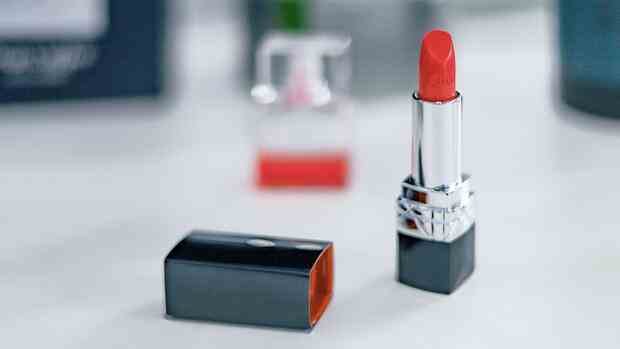Dusseldorf The situation is uncertain, money is tight – and consumers are buying more lipstick. What sounds trivial at first can be observed again and again in economically difficult times.
Cosnova also noticed this: the Hessian family company sold more lipsticks in 2022 than any other company. Compared to 2021, Cosnova increased sales of lipsticks from its best-selling brand Essence by a third.
An explanation: Those who cannot or do not want to make large purchases such as cars or real estate, at least treat themselves to the small luxury in everyday life: Men buy more perfumes, women use lipsticks more often. This phenomenon is known as the lipstick effect.
The entire industry benefits from this: the industry association for body care and detergents expects decorative cosmetics to grow by 16 percent in 2022 compared to the previous year, while the market recently shrank by an average of 1.5 percent a year. Decorative cosmetics also include face cream, eye shadow and nail polish. According to market researcher Euromonitor International, lipstick sales in Germany alone increased by five percent in 2022 compared to the previous year.
Top jobs of the day
Find the best jobs now and
be notified by email.
The fact that many women resort to a comparatively small but visible luxury during the crisis has been shown several times: During the financial crisis, German gross domestic product (GDP) fell by more than five percent, while lipstick sales rose at the same time.
Even after the terrorist attacks of September 11, 2001, Leonard Lauder, then head of the luxury group Estée Lauder, observed a significant increase in lipstick sales. This was also true during the Great Depression of the 1930s.
And now during the energy price crisis: According to market researcher GfK, eight million consumers bought at least one lipstick in 2022, in 2021 there were two million fewer people.
Other small luxury products are also booming in the crisis. The wellness brand Rituals, which offers bath foams, scented candles and body creams, is currently noticing increased demand. “People want to spoil themselves even in times of uncertainty,” said Rituals boss Raymond Cloosterman recently in an interview with the Handelsblatt.
Evolutionary psychologists explain the lipstick effect by saying that people in crises put more effort into appearing more attractive. The calculation behind it: This makes it easier to win a life partner, which means that you are more secure in difficult times.
>> Read more: Head of the wellness brand Rituals – “People treat themselves to a little luxury in times of uncertainty”
Cosnova and the industry giant L’Oréal expect the positive development to continue. Isabel Neudeck, Managing Director for L’Oréal’s luxury business in Germany and Austria, says: “The market for lipsticks continues to grow. There is no sign of any weakness in consumption.” Euromonitor International expects sales of lipsticks to increase by almost 14 percent in 2023.
No lipstick effect during the pandemic
From an economic point of view, the lipstick index reinforces the fears of economists and entrepreneurs of an impending recession. However, lipstick sales aren’t a hard economic indicator. In economically prosperous times, cosmetics are also in greater demand, as was observed in 2013 and 2014.
The lipstick effect did not exist during the pandemic: GDP fell by 3.7 percent in the first year of the corona virus, 2020, and lipstick sales collapsed by almost a fifth. Overall demand for decorative cosmetics also fell by almost 13 percent.
The decorative cosmetics sector is benefiting from the end of the pandemic restrictions.
(Photo: Cosnova)
Concerts and visits to the theater were canceled and people worked from home. Anyone who met other people covered a large part of their face with mouth and nose protection. Many consumers therefore saw no need to apply lipstick or make-up.
>> Read more: Make-up market leader Cosnova: “We have not experienced such costs in 20 years”
In addition to the lipstick effect, the recent increase in sales may also be due to catch-up effects. “Hardly any masks are required anymore, or no longer, parties and events without restrictions: We also attribute the fact that we will be able to record record sales in 2022 to the end of the pandemic restrictions,” says Yvonne Wutzler, Head of Marketing at Cosnova.
Overall, however, the buyers’ money is not so loose. The consumer climate reached an all-time low in autumn, but has recently stabilized at a low level.
When it comes to lipstick, bucking the trend, buyers continue to buy brands
Branded products in particular are losing: cheaper no-name products, so-called private labels, have been able to gain market share in 72 percent of the 327 product categories examined by GfK.
>> Read more: Why the private label boom is putting manufacturers under pressure
With lipsticks, on the other hand, it is noticeable that consumers are increasingly turning to the often more expensive brands. According to GfK, sales of branded lipstick products increased by more than 48 percent in the past twelve months, while private label sales increased by just over 32 percent.
More: Falling profits despite higher prices: An industry that has long been considered crisis-proof is coming under pressure
